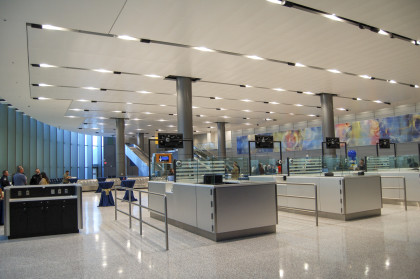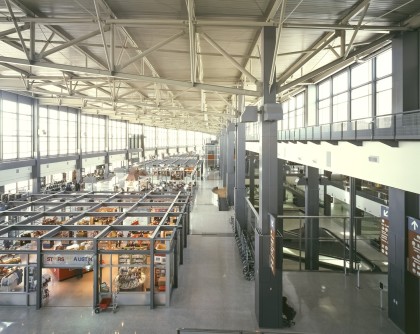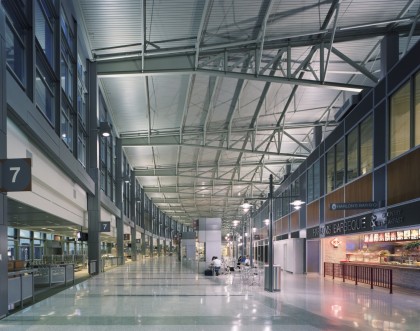Recently, I experienced a sort of cosmic convergence of unrelated things happening. First, an 18-year old undergraduate student came to my office to discuss an essay he’s writing about a building of his choosing that he admires. He chose the Dallas Fort Worth Airport (DFW). Initially, I thought that was a dubious selection, but he explained beautifully what he admired from a lay perspective.
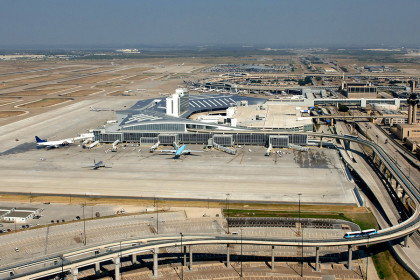
He was in awe of how the airport gets tens of thousands of people into and out of the facility and deals with their associated needs every day–routing them just where they all want to go, funneling them through security, feeding and entertaining them and connecting them with their air routes. He also understood the complexity of fueling systems, maintenance, equipping, baggage conveyance, security requirements and other infrastructure needed to support the aircraft end of the operation.
He got it that DFW is not flawless, but he found it quite phenomenal that it managed to handle all it has to deal with: baggage, food, people, planes, trucks, fuel, supplies, power, parking, police… The list goes on.
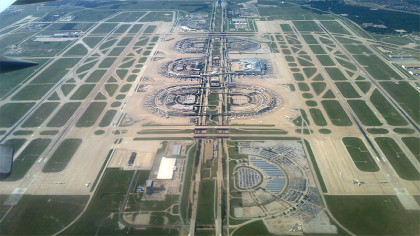
Hearing this through the eyes of an 18 year old, I thought, “Of course, DFW is really impressive in terms of what it accomplishes. Why aren’t we constantly more impressed when building manage these herculean tasks?”
The very next day I was at DFW for an AIA jury to select the Latrobe Prize recipient this year. The jury convened at the airport because jurors were flying in from all over the country. We met at the Grand Hyatt, located smack in the middle of Terminal D. You fly in, work, stay and fly out. This is not my favorite way to travel, but I did not have any say this time.
As it turns out, the topic of this research prize is resiliency. In response to the post-Katrina and Super-Storm Sandy world, the prize received proposals discussing how to withstand the impacts of climate change, hurricanes, floods, droughts and other calamities. Having read all the proposals, and having focused intently on resiliency, suddenly a snowstorm hit the airport. This mini-calamity was certainly not at the scale of a flood or hurricane, but it was an unusual weather event in an area that typically doesn’t get much snow.

I was pretty blown away by how well DFW handled the challenge. My flight, like many others, was canceled, and I was seven hours late leaving for Austin. Many people were stranded overnight. The airport issued cots, and I noticed all of the food operations seemed perfectly capable of serving the many more meals they were called on to deliver. All of the myriad issues pertaining to interface with ground transportation also seemed to operate admirably. I’m watching how civilized this all was, and it struck me: this is invisible resiliency at work.
Maybe we, as architects, have lost perspective on how fundamentally we are constantly called upon to build in resiliency–maybe not at the scale of a flood or hurricane, but certainly for an unexpected snowstorm. It was the combination of the student making me re-examine DFW, the Latrobe Prize making me think about resiliency, and then observing snow at DFW that made it occur to me: this is something that really matters in the way we do architecture every day!
We are constantly called upon to make buildings as bullet-proof as possible—especially some particularly demanding building types like a hospital, an airport, a stadium, or a mission critical facility. These are building types we frequently deal with in our practice at Page, and their complexity and demanding performance challenges are actually quite exhilarating to deal with as designers and as a delivery team.
Our new addition to Austin Bergstrom Airport is an excellent example. We are adding a front-door pavilion to the airport (see images, below) where people will come in, go through security, have coffee or lunch and proceed to their gate. The addition is above a complicated international customs floor as well as the loading dock, which handles all the moving in and out of supplies for the entire airport. The new addition resolves a complicated puzzle, and it has to do so keeping worst-case scenarios in mind. Without being so conscious of it, we were working hard to create the kind of invisible resiliency we have come to expect of buildings in the 21st century.

